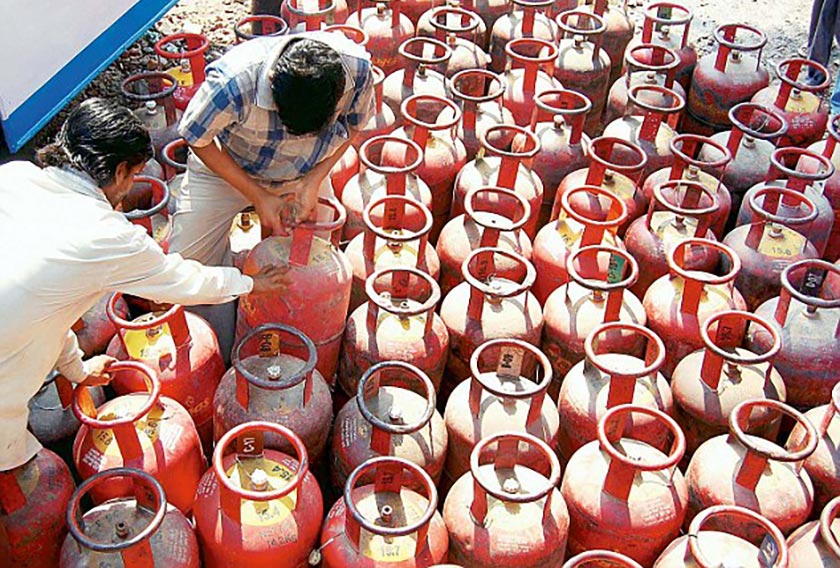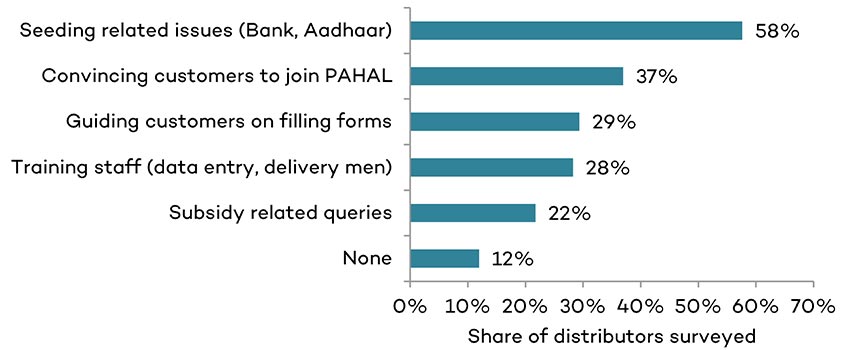Report
DBTL Performance Evaluation
Insights from the World’s Largest Subsidy Benefit Transfer Scheme
Abhishek Jain, Shalu Agrawal, Karthik Ganesan
April 2016 | Energy Transitions
Suggested Citation: Jain, Abhishek, Shalu Agrawal, and Karthik Ganesan. 2016. DBTL Performance Evaluation: Insights from the World’s Largest Subsidy Benefit Transfer Scheme. New Delhi: Council on Energy, Environment and Water.
Overview
The modified Direct Benefit Transfer for LPG (DBTL) scheme was launched in January 2015 to provide LPG subsidies directly into consumers’ bank accounts. The Council, in collaboration with the International Institute for Sustainable Development (IISD), conducted an independent performance evaluation of the scheme across Gujarat, Haryana and Kerala. The evaluation focused on assessing the efficacy of the scheme against its stated objectives and its implementation process, as well as the experiences of key stakeholders with the scheme’s implementation and impact.
India has a mammoth 164 million active LPG connections. However, well-to-do households remain the primary beneficiaries, with 40 per cent of the LPG subsidy benefitting the richest 20 per cent.
The analysis, the first of a two-part series, found that the scheme’s implementation was fairly successful with high levels of enrolment and customer satisfaction. 85 per cent of the distributors surveyed reported significant impact of the scheme on controlling both the diversion of cylinders and the multiple connections.
Since 2015, government has initiated reforms such as the ‘Give it Up’ campaign (nudging the well-off to voluntarily surrender their subsidy claims) and DBTL to improve the targeting of subsidies and reduce leakages. The first phase of the ACCESS Survey, had found that 95 per cent of rural households without LPG cited their inability to afford an LPG connection as a major barrier to switching to cleaner cooking fuels.

Key Findings
- Seventy-five per cent of the consumers received their subsidy in their bank accounts, evenly across rural and urban areas.
- The scheme had a significant impact on controlling the diversion of cylinders and having multiple connections.
- Every second household reported improved, timely delivery of LPG cylinders in the months following the scheme’s implementation.
- A majority of the distributors faced difficulties during the seeding process, due to delays in document verification and high rates of rejection.
- Variations in protocols followed across banks, lack of dedicated resources and lack of coordination between headquarters and local branches were major issues.
- Key factors that made the scheme successful ranged from institutional coordination, effective utilisation of government schemes, and a strong emphasis on creating awareness to independent performance assessment exercises.
Challenges faced by distributors during the DBTL rollout

Source: CEEW analysis, 2016
Key Recommendations
- Plan a more careful assessment to estimate the scheme’s impact on weeding out duplicate connections.
- Resolve issues such as non-receipt of subsidy (higher in rural areas) and lack of information about subsidy transfer (16.6 per cent consumers were unaware to ensure that the subsidy reaches all deserving households.
- Make financial inclusion more effective as DBTL may pose a barrier to LPG access as LPG penetration increases in rural areas.
Key challenges for the future will be to enhance the targeting of LPG subsidies, while promoting the transition from kerosene use to grid and off-grid electricity for lighting in rural India.







